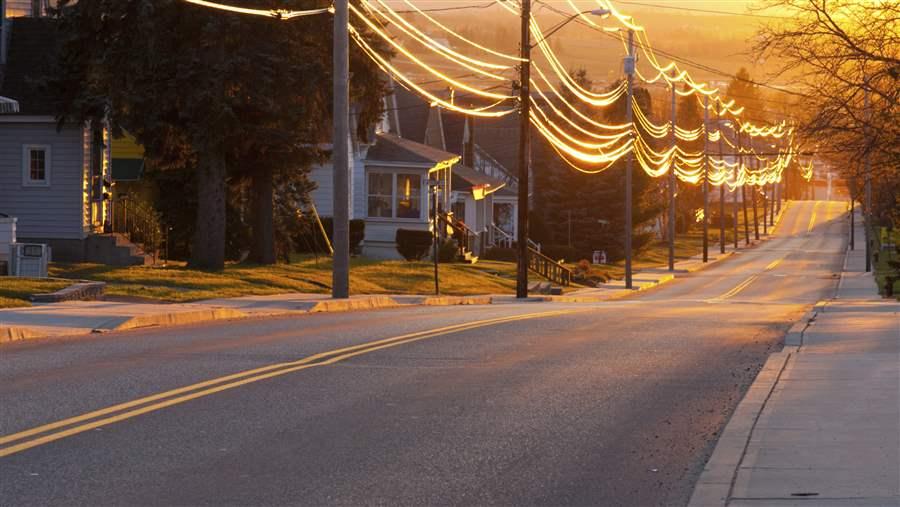Where Americans Live Helps Shape Their Financial Security
Neighborhood wealth or poverty can influence economic opportunity, a top concern for voters

Research has found that neighborhoods, communities, and even metropolitan areas can act as critical drivers of Americans’ financial security, their attitudes about their financial situations, and the black-white mobility gap.
© iStock
Seven years after the Great Recession, many American families are still feeling economically vulnerable: More than half report that they are not financially prepared for the unexpected, and a third say they have no savings. In 2014, a remarkable 92 percent of Americans said that, given the choice, they would prefer financial stability over moving up the income ladder, an increase of 7 percentage points since 2011. It comes as no surprise, then, that the economy remains one of the top issues in the 2016 presidential campaign.
Some economic issues, such as employment and income, have been prominently discussed by politicians on both sides of the aisle during the campaign season. Pew research demonstrates that median earnings have been relatively flat over the past decade, and a growing body of literature on family finances indicates that substantial fluctuations in income are the norm.
But other issues, such as the significance of where people live, are often overlooked in these conversations. For example, Pew-sponsored research has found that neighborhoods, communities, and even metropolitan areas can act as critical drivers of Americans’ financial security, their attitudes about their financial situations, and the black-white mobility gap:
- Among families with similar incomes, levels of net worth differ substantially depending on the neighborhood in which they live. For example, typical low-income households in disadvantaged neighborhoods have only $800 in accumulated wealth, compared with $35,000 for typical families with comparable income that live in low-poverty communities. Although residents of affluent areas are also more likely to own homes, this pronounced difference in net worth holds true regardless of home equity. In addition, residents of low-poverty neighborhoods are more likely to have savings and to have higher total savings than those in high-poverty areas.
- Families living in high-poverty neighborhoods express more negativity about their financial situations than do those in more affluent communities, even when many other characteristics, such as age, race, or income, are held constant. This may reflect a recognition that moving up the income ladder is increasingly difficult, especially in economically disadvantaged areas. In 2009, nearly 40 percent of Americans said it was common for someone to start poor, work hard, and become rich. Five years later, just 23 percent of Americans still said so.
- Neighborhood poverty during childhood plays an important role in the black-white mobility gap. Growing up in high-poverty neighborhoods strongly increases children’s chances of being downwardly mobile—that is, ending up on a lower rung of the economic ladder than their parents were on. Although only a small percentage of white children live in neighborhoods of high disadvantage, many black children do—a pattern that hasn’t changed in 30 years. This disparity accounts for a greater portion of the black-white downward mobility gap than the combined effects of parental education, occupation, and labor force participation and a range of other family characteristics.
However, black children whose neighborhood poverty rates declined had greater economic success in adulthood than their peers who lived in communities where poverty rates were stable or increased. - The most economically segregated metropolitan areas—those where the rich and the poor live far from each other—are also the least economically mobile. Parents can pass on economic and social advantages to their children through the purchase of private resources, such as books, enrichment activities, high-quality child care, or private schooling. However, parents in economically segregated areas can also transmit advantage across generations through selecting a home in a wealthier community, where the schools are likely to be of higher quality and where there are probably greater economic opportunities.
This research suggests that when considering how to have a lasting influence on family financial security and economic mobility across the United States, policymakers should pay close attention to the economic needs of neighborhoods, including options for reducing concentrations of poverty. As the presidential candidates outline their economic agendas, they should examine the power of place in both perception and reality: The pathway to the American Dream begins in voters’ backyards.
Sarah Sattelmeyer is an officer and Joanna Biernacka-Lievestro is a senior research associate with the financial security and mobility project.









